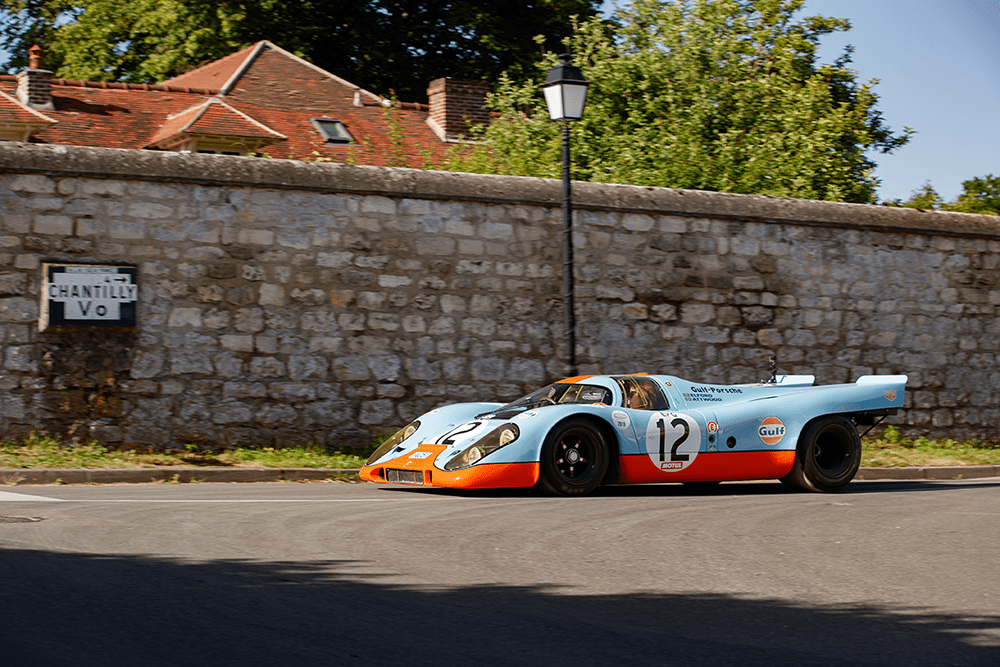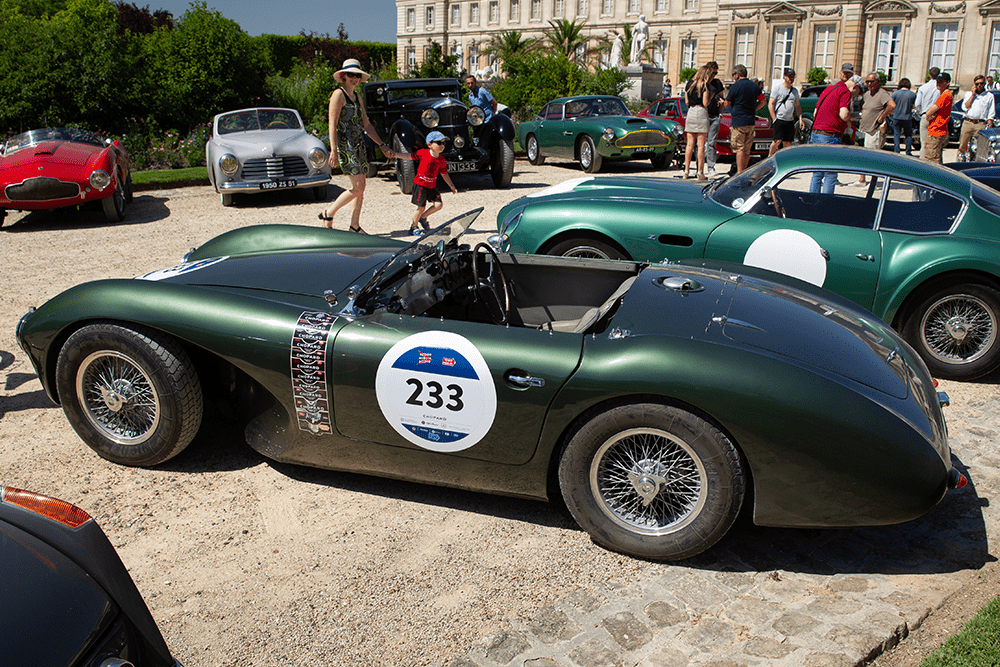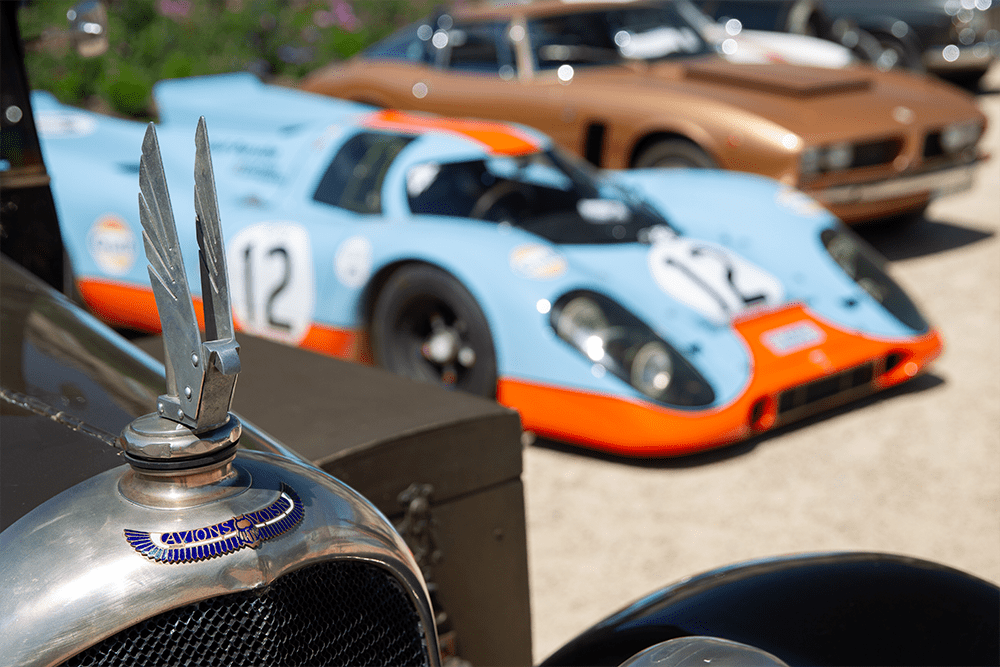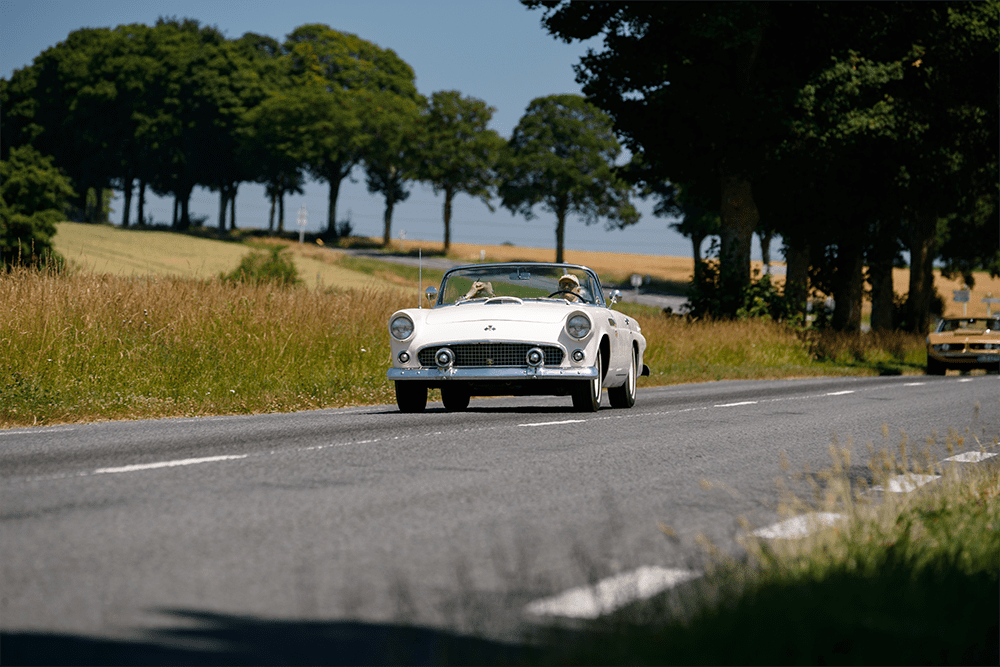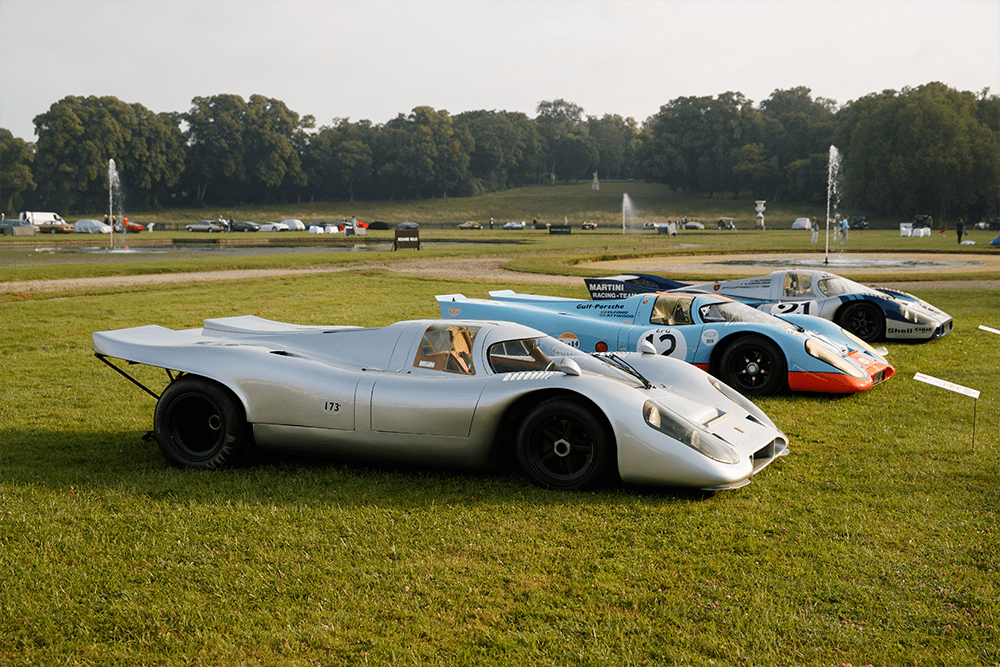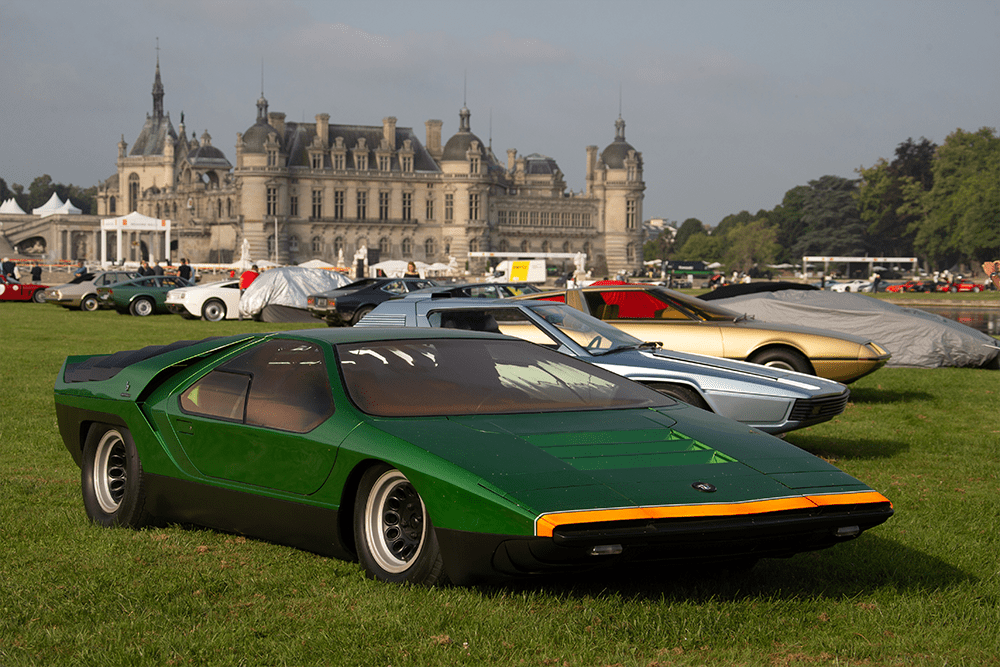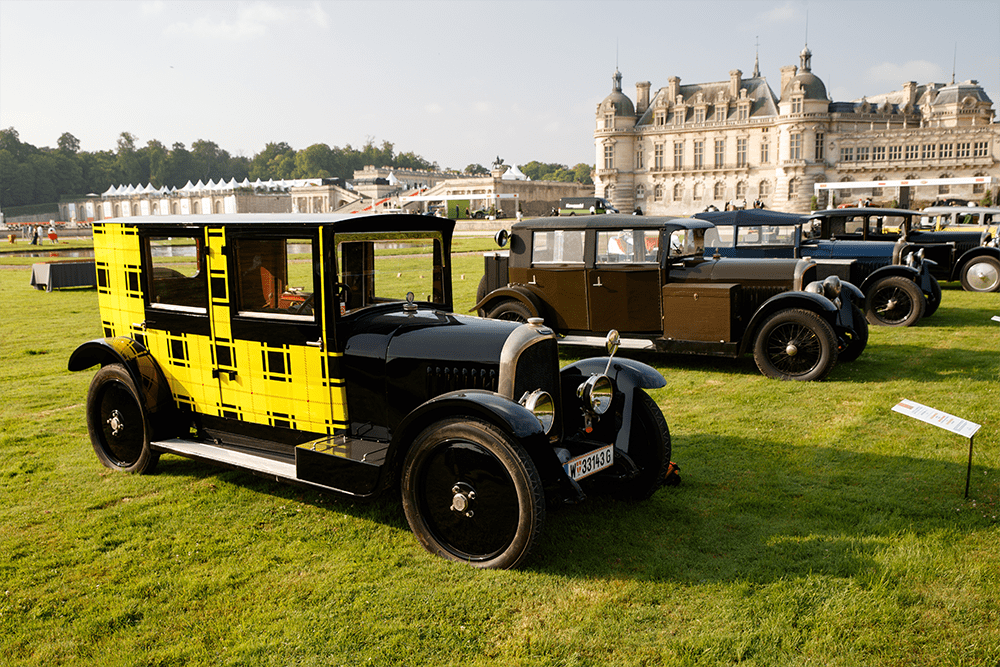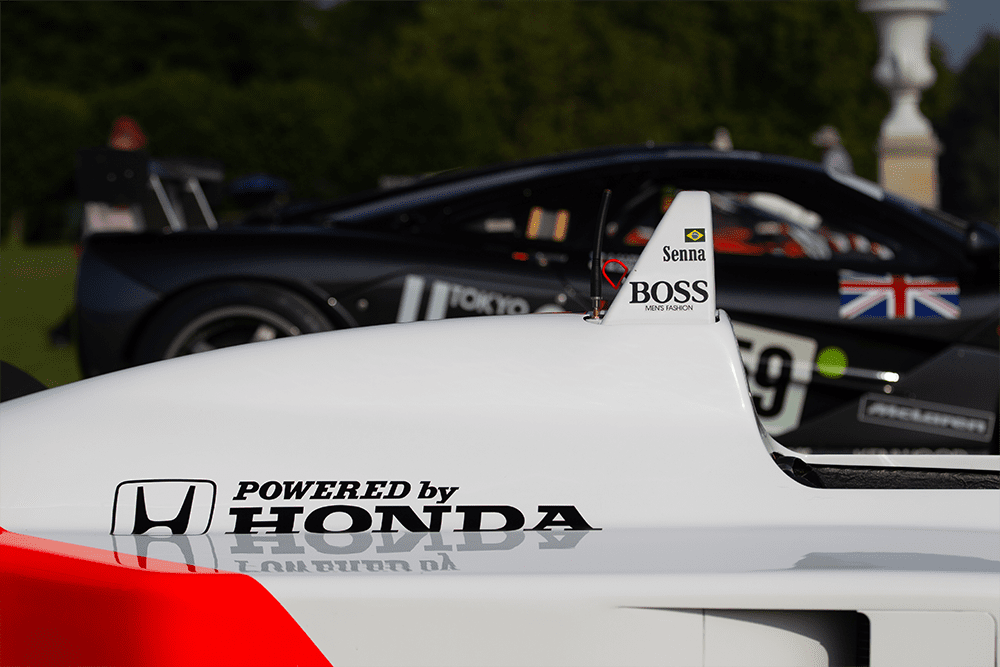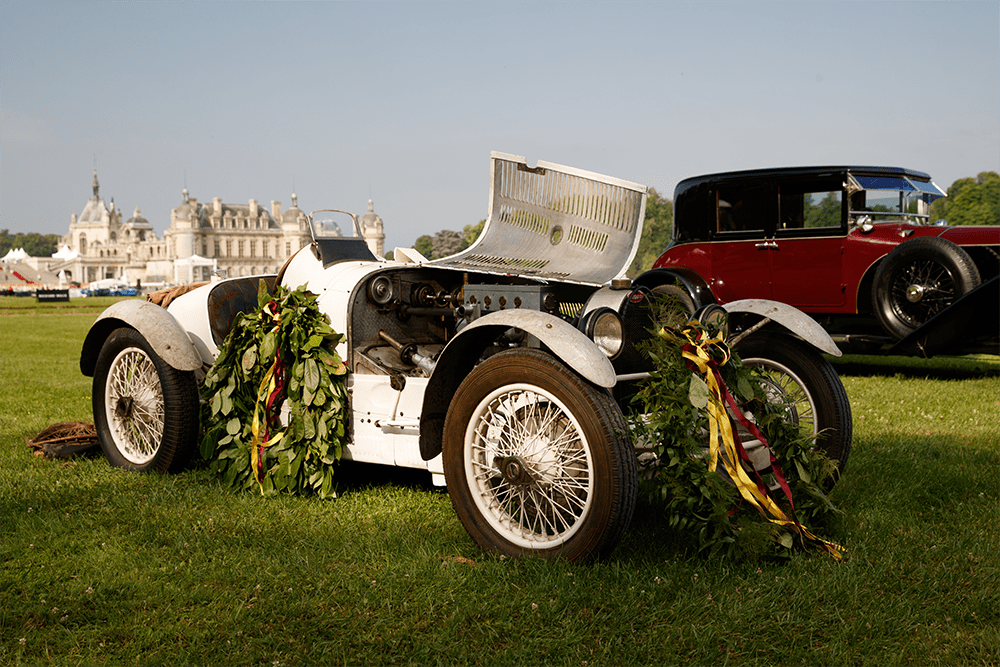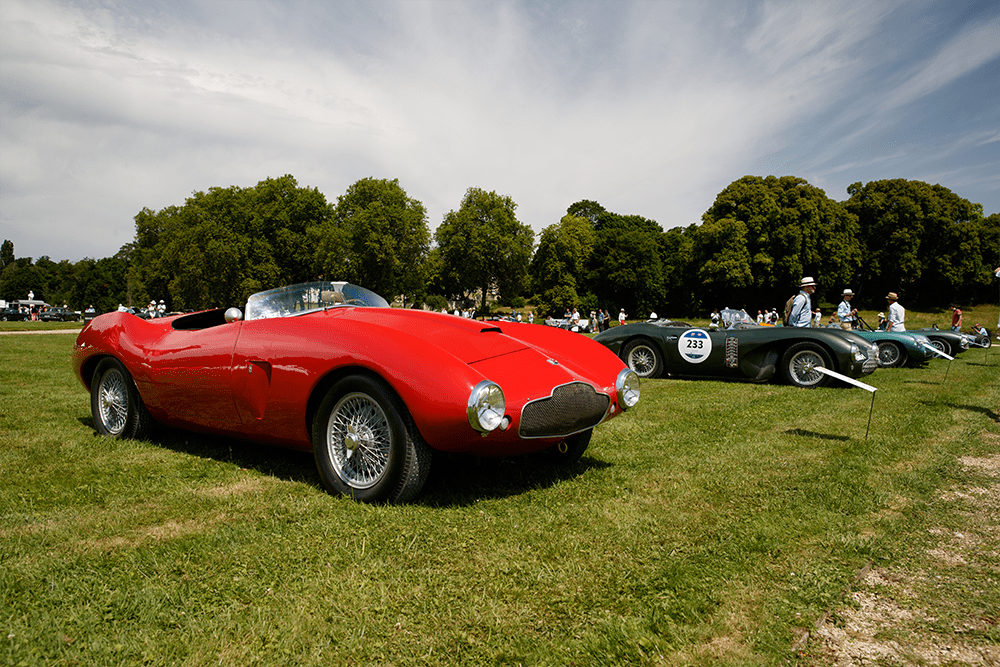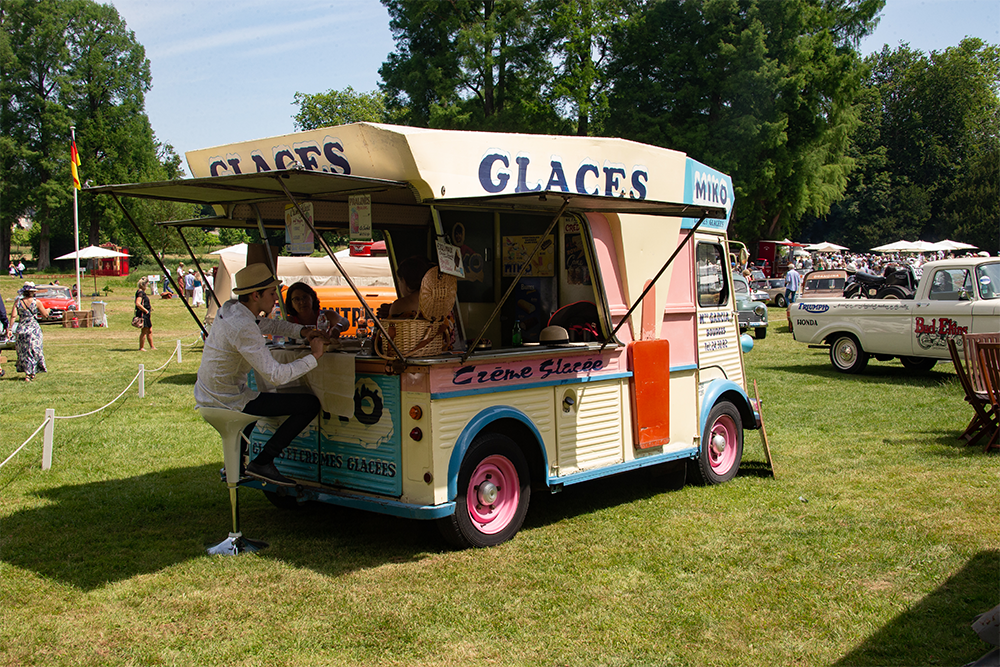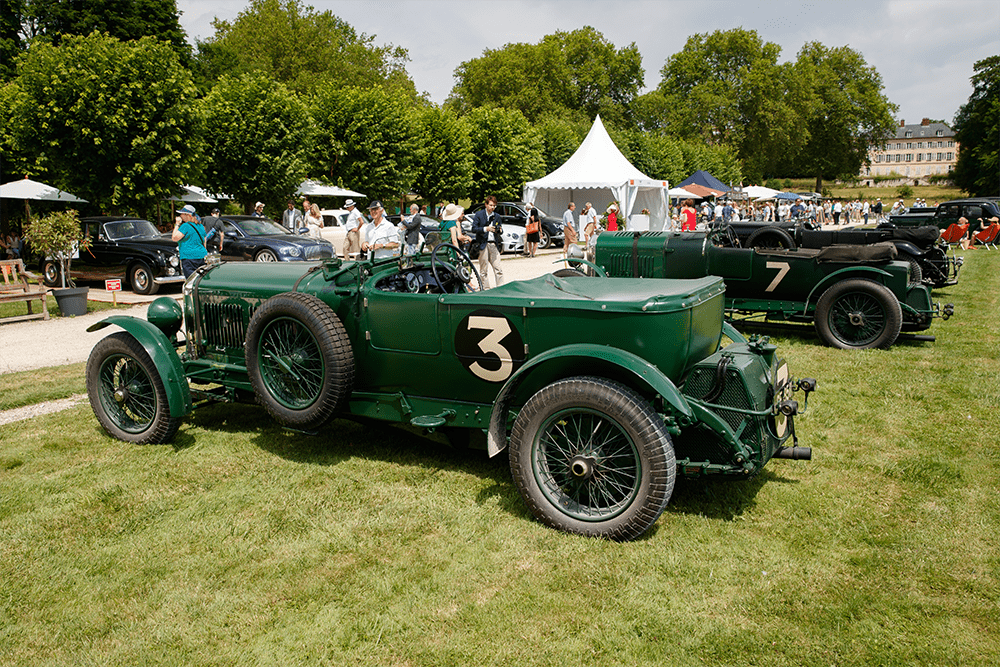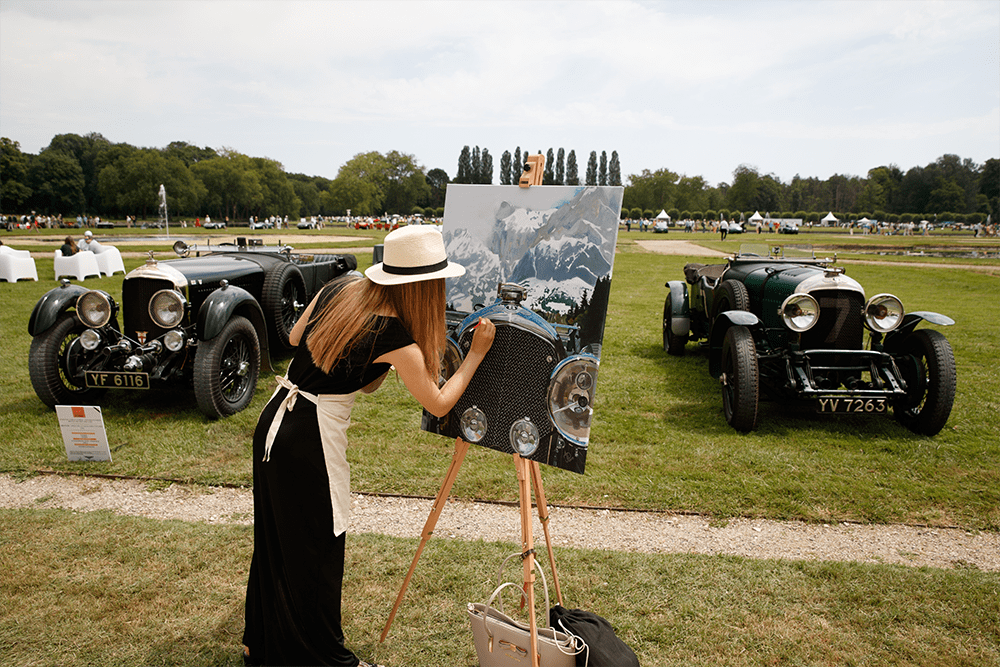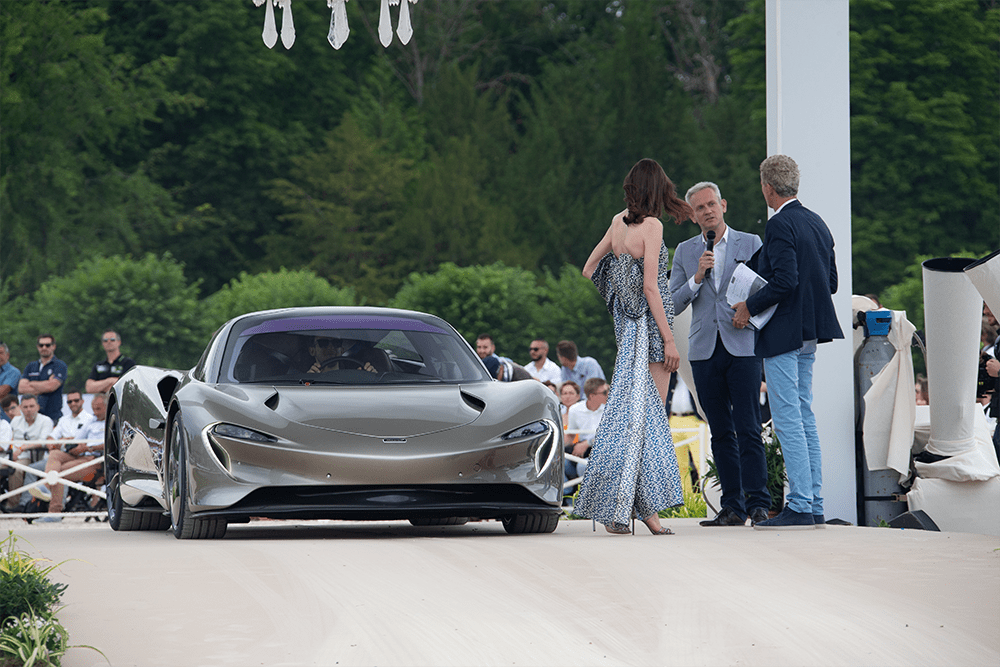2019 Chantilly Arts & Elegance
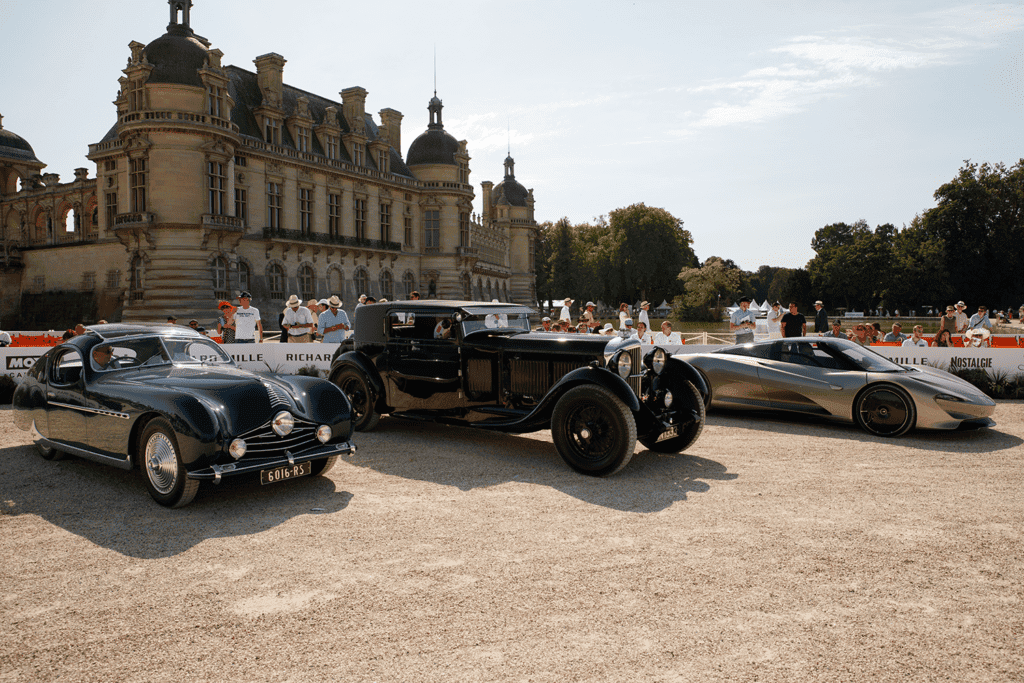
As the name that stuck suggests, concours d’elegance, were particularly popular in France during their heyday of the 1930s through to the 1950s. During that period these events were effectively beauty pageants where custom coach-builders faced off their latest creations. There were more than a few of those carrossiers in France, which explains the popularity of concours d’elegance in the country. In today’s form, the Concours d’elegance is a slightly different beast as, generally speaking, the cars that are judged are old and the results are not based on beauty alone but things like history and condition as well. The modern concours d’elegance has very much been an American preoccupation, but in 2014 the Peter Auto organisation brought a major concours back to France in the form of the Chantilly Arts & Elegance Richard Mille.
With the Domaine de Chantilly, just north of Paris, organiser Patrick Peter found a perfect spot for a concours d’elegance. The majestic Chateau (palace) has a vast, grass-covered garden that is separated by a small lake. Lined with trees on both sides, the garden provides ample room to line up a decent number of cars with enough space between them to allow visitors to admire them from every angle. The Domaine also includes the largest stables in Europe and the largest collection of antique paintings in France after the Louvre.
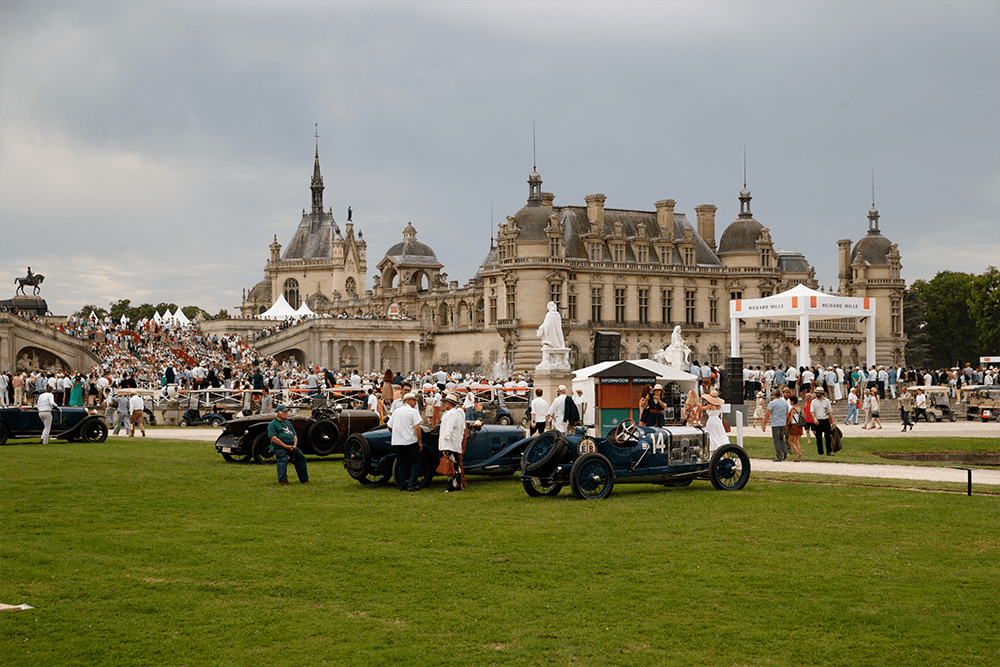
The Chantilly Arts & Elegance combines the old and the new, with three separate ‘Best of Show’ awards. The first two are for pre- and post-War cars respectively, while the third is chosen from a selection of around ten show cars that to some extent embody the spirit of the long-lost art of custom coach-building. Each show car is presented with a model dressed by a noted couturier.
Peter Auto is best known for staging historic racing meetings and the Tour Auto retrospective. Taking a page from the latter, the activities for the Chantilly Arts & Elegance kicked off with a 100km rally through a local national park with a lunch stop in a nearby chateau. All entrants were invited to join, and despite the scorching conditions, around three dozen cars lined up for the rally. Among them was the most unlikely of machines to take on public roads: a Gulf liveried Porsche 917 K. It was entered as part of the 50th anniversary celebrations of the 917 and this particular car has already been successfully raced in Europe during this season. The owner reported that the speed bumps were hardly an issue and that the engine did not run hotter than 85º centigrade despite the record breaking outside temperatures. Along with most other participants, the 917 completed the rally without a hitch.
Once back at the Chateau de Chantilly, the rally participants joined the rest of the entrants for judging. This already took place on Saturday to allow for a Sunday program that was packed with activities. A highlight of these activities was a class-by-class prize ceremony that included a parade on the large oval at the head of the garden, allowing all the guests to experience the cars in motion.
Enthusiast clubs always play a key part in Peter Auto events and Chantilly was no exception with vast parts of the grounds reserved for the marque clubs. A car from what was judged the best club display, in this case the Facel Vega club, was also invited to the parade. Considering the location, it was not surprising that horses played their part in the day’s program with a demonstration of over two dozen carriages.
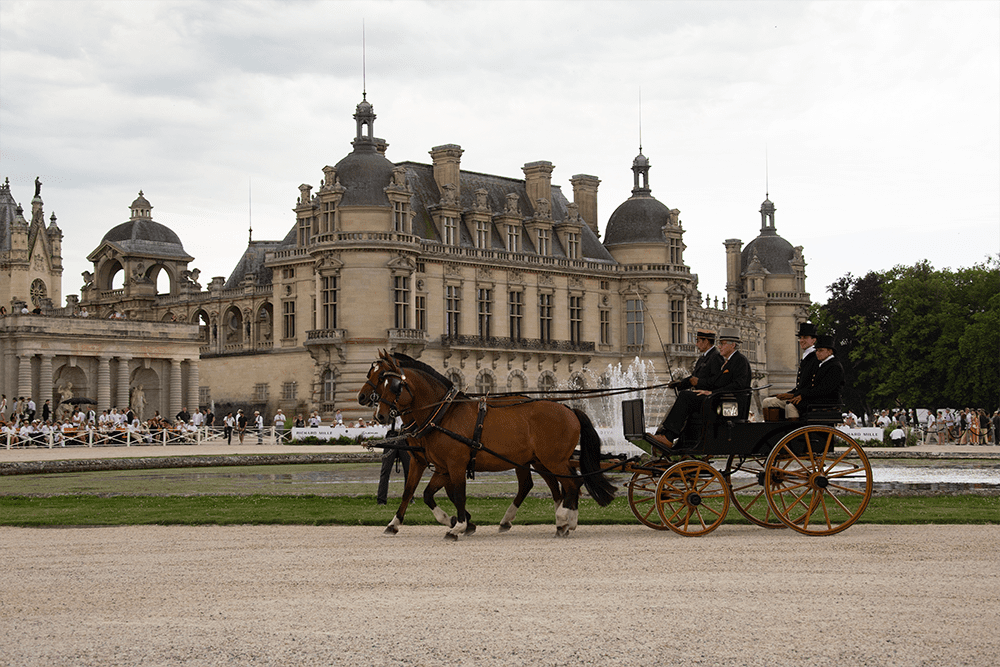
In addition to the 50th anniversary of the Porsche 917, the event also marked the centenaries of Ballot, Bentley and Voisin with separate classes. While most of you will be familiar with Bentley, both the Ballot and Voisin names have long since disappeared. They are still celebrated today for good reason, though.
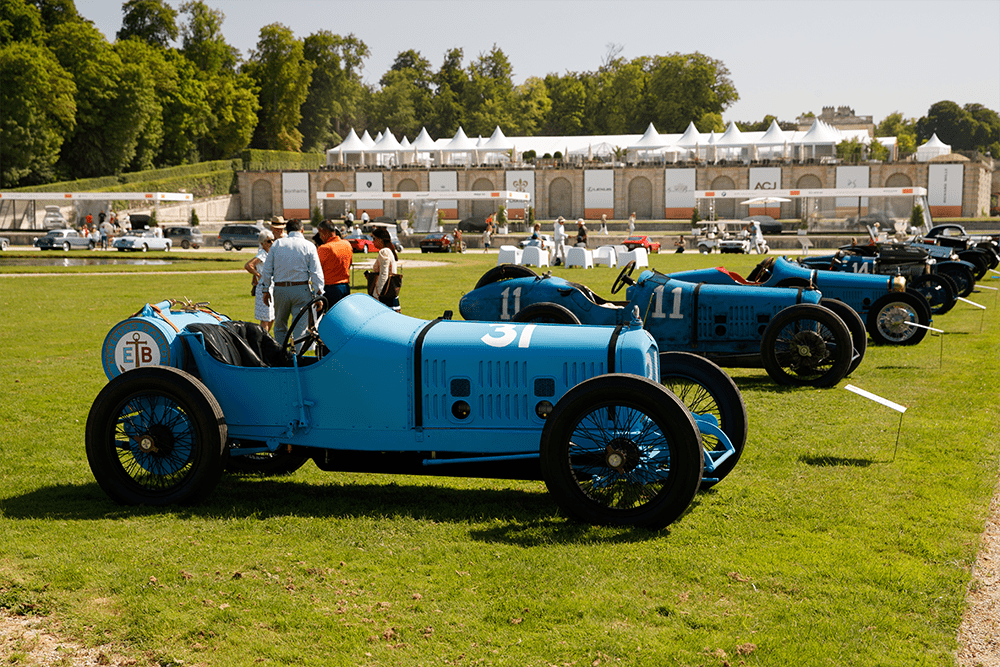
Recognizing the value of racing, the very first Ballot was entered in the 1919 Indy 500. Fitted with a cutting-edge eight-cylinder engine, it immediately qualified on pole. This very car was on display, along with two of its smaller engined successors, including the winner of the inaugural Italian Grand Prix. The small French company later also produced road cars until it was taken over by Hispano Suiza in the early 1930s.
Combining his past as an aeroplane designer and influences from Art Deco, Gabriel Voisin created some truly unique machines. Always powered by sleeve-valve engines, these singular creations usually featured in-house designs with often very striking fabric interiors. It certainly is hard to mistake a Voisin for anything else.
There was also a class dedicated to the creations of Italian designer Marcello Gandini, who spent most of his career at the helm of Italian carrozzeria Bertone. Among his most famous creations are the Lamborghini Countach and Lancia Stratos. Great examples of these were on display in the long line-up of his cars in this class, along with striking show cars like the Alfa Romeo Carabo and the Ferrari 308 GT Rainbow. Still alive and well, Gandini was asked to join his creations but he declined the invitation as he did not feel his work warranted this much praise.
Certainly one of Gandini’s spiritual successors is Horacio Pagani, who introduced the now legendary Zonda supercar exactly 20 years ago. Especially for the occasion, the very first Zonda chassis has been completely restored and was shown at Chantilly as part of a Pagani celebration.
Further special classes marked the 60th anniversary of Aston Martin’s first, and only, 24 Hours of Le Mans win and the 110th anniversary of Bugatti. There were also classes for cars that starred at the Paris Motor Show through to 1961 and Endurance GT cars from 1993 onwards.
At the end of a hot and sunny day, the three ‘Best of Show’ winners, as picked by the judges, were announced. From the modern show cars and limited production road cars, the jury chose the McLaren Speedtail. This is a modern interpretation of the legendary F1 complete with a central-seat driving position. Production is limited to just 106 examples, which is the exact number of F1s that were built during the 1990s. Despite a price of £1.75 million before taxes, all of them were sold before the Speedtail was even officially announced.

Up next were the two chosen classic cars. In the pre-War category a mighty 8-Litre Bentley with fixed-head coachwork was declared the winner. It was great to see that the car had survived that with its original ‘Foursome Coupe’ bodywork by Freestone & Webb, as many of its contemporaries were fitted with more popular Tourer bodies later in their life.
The post-war award went to a somewhat unusual Figoni & Falaschi bodied Talbot Lago T26 GS. With some imagination many of the unique details on the coachwork reveal that the gentleman who commissioned the car had made his fortune in the zip industry. Interestingly the unique Talbot Lago was recently completely restored in the Czech Republic and was also one of the runners up in the 2018 Pebble Beach Concours d’Elegance.
If anything, the Chantilly Arts & Elegance Richard Mille shows that a concours d’elegance is still a natural fit in France. It provides more than a day’s worth of entertainment and despite arriving a day early, we did not get to see all that the event had to offer.
